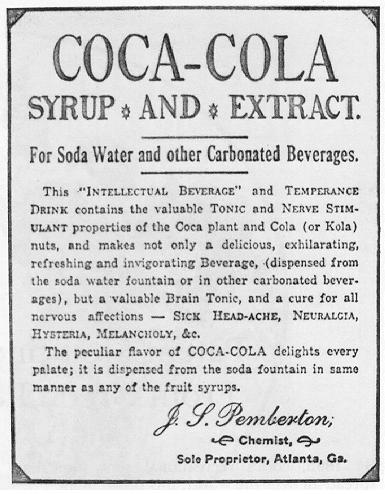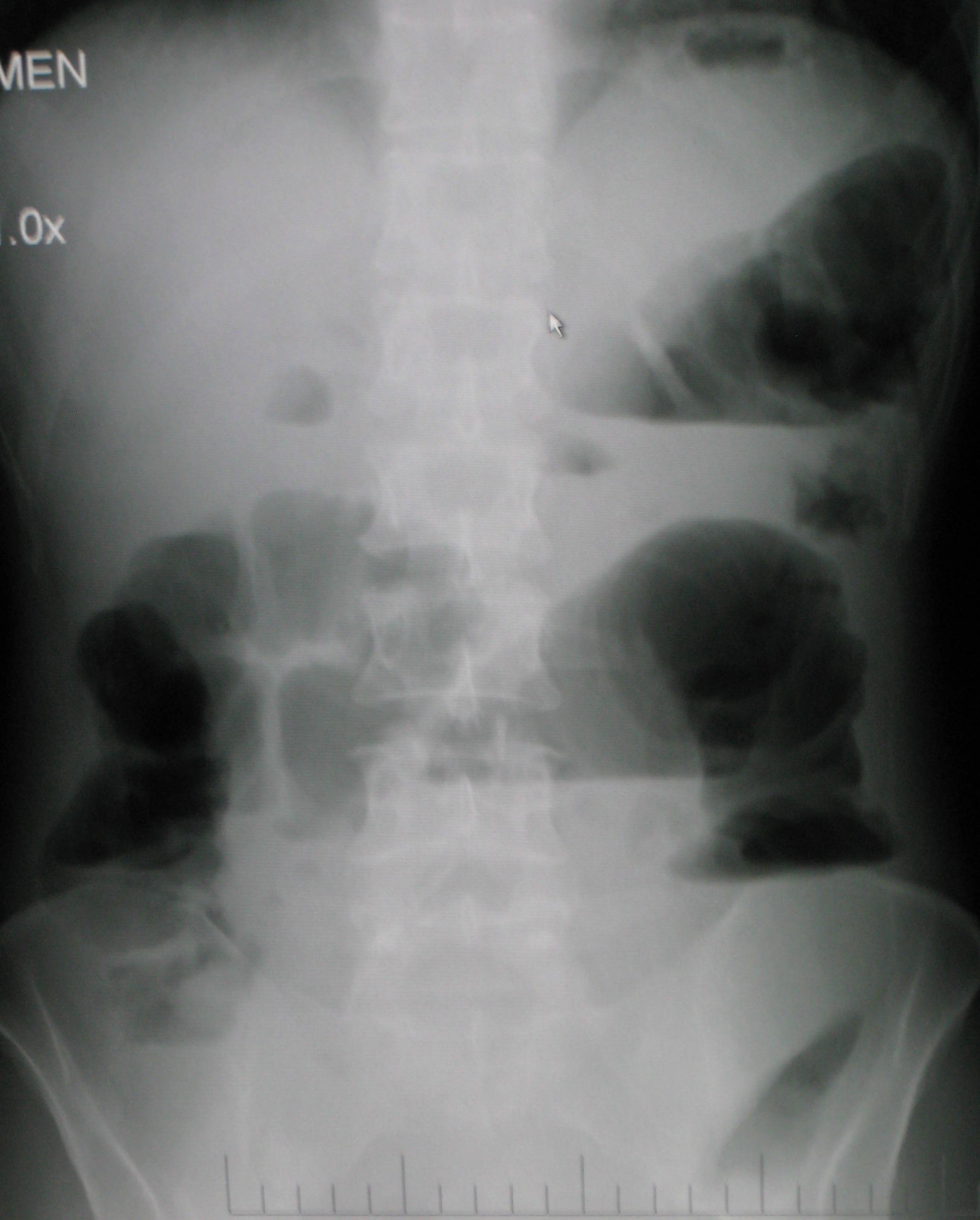|
Phytobezoar
A phytobezoar is a type of bezoar, or trapped mass in the gastrointestinal system, that consists of components of indigestible plant material, such as fibres, skins and seeds. While phytobezoars may be discovered incidentally on barium x-ray or endoscopic testing of the stomach, individuals with phytobezoars may develop symptoms: nausea, vomiting, gastric outlet obstruction, perforation, abdominal pain, and bleeding have been reported. Conditions that lead to decreased motility in the stomach (gastroparesis) and surgeries on the stomach (such as vagotomy or gastric bypass) are associated with the development of phytobezoars. A specific type of phytobezoar, termed a diospyrobezoar, is associated with ingestion of unripe persimmons, which contain a soluble tannin called shibuol that polymerizes into a coagulative cellulose-protein compound in the acid environment of the stomach, to form the bezoar. In addition to their presence in human stomachs, phytobezoars have been documented ... [...More Info...] [...Related Items...] OR: [Wikipedia] [Google] [Baidu] |
Coca-Cola Treatment Of Phytobezoars
Carbonated soda treatment of phytobezoars is the use of carbonated soda to try to dissolve a phytobezoar. Bezoars consist of a solid and formed mass trapped in the gastrointestinal system, usually in the stomach. These can also form in other locations. Carbonated soda has been proposed for the treatment of gastric phytobezoars. In about 50% of cases studied, carbonated soda alone was found to be effective in gastric phytobezoar dissolution. Unfortunately, this treatment can result in the potential of developing small bowel obstruction in a minority of cases, necessitating surgical intervention. It is one of many other stomach disorders that can have similar symptoms. Gastric phytobezoars are a form of intestinal blockage and are seen in those with poor gastric motility. The preferred treatment of bezoars includes different therapies and/or fragmentation to avoid surgery. Phytobezoars are most common and consist of various undigested substances including lignin, cellulose, tanni ... [...More Info...] [...Related Items...] OR: [Wikipedia] [Google] [Baidu] |
Bezoar
A bezoar is a mass often found trapped in the gastrointestinal system, though it can occur in other locations. A pseudobezoar is an indigestible object introduced intentionally into the digestive system. There are several varieties of bezoar, some of which have inorganic constituents and others organic. The term has both a modern (medical, scientific) and traditional usage. Types By content * Food boluses (or boli; singular bolus) have the archaic and positive meaning of bezoar, and are composed of loose aggregates of food items such as seeds, fruit pith, or pits, as well as other types of items such as shellac, bubble gum, soil, and concretions of some medications. * Lactobezoars are a specific type of food bezoar comprising inspissated milk. It is most commonly seen in premature infants receiving formula foods. * Pharmacobezoars (or medication bezoars) are mostly tablets or semiliquid masses of drugs, normally found following overdose of sustained-release medications. * Ph ... [...More Info...] [...Related Items...] OR: [Wikipedia] [Google] [Baidu] |
Coca-Cola
Coca-Cola, or Coke, is a carbonated soft drink manufactured by the Coca-Cola Company. Originally marketed as a temperance drink and intended as a patent medicine, it was invented in the late 19th century by John Stith Pemberton in Atlanta, Georgia. In 1888, Pemberton sold Coca-Cola's ownership rights to Asa Griggs Candler, a businessman, whose marketing tactics led Coca-Cola to its dominance of the global soft-drink market throughout the 20th and 21st century. The drink's name refers to two of its original ingredients: coca leaves and kola nuts (a source of caffeine). The current formula of Coca-Cola remains a closely guarded trade secret; however, a variety of reported recipes and experimental recreations have been published. The secrecy around the formula has been used by Coca-Cola in its marketing as only a handful of anonymous employees know the formula. The drink has inspired imitators and created a whole classification of soft drink: colas. The Coca-Cola Company p ... [...More Info...] [...Related Items...] OR: [Wikipedia] [Google] [Baidu] |
Persimmon
The persimmon is the edible fruit of a number of species of trees in the genus '' Diospyros''. The most widely cultivated of these is the Oriental persimmon, ''Diospyros kaki'' ''Diospyros'' is in the family Ebenaceae, and a number of non-persimmon species of the genus are grown for ebony timber. In 2019, China produced 75% of the world total of persimmons. Description Like the tomato, persimmons are not commonly considered to be berries, but morphologically the fruit is in fact a berry. The tree ''Diospyros kaki'' is the most widely cultivated species of persimmon. Typically the tree reaches in height and is round-topped. It usually stands erect, but sometimes can be crooked or have a willowy appearance. The leaves are long, and are oblong in shape with brown-hairy petioles in length. They are leathery and glossy on the upper surface, brown and silky underneath. The leaves are deciduous and bluish-green in color. In autumn, they turn to yellow, orange, or red. Persi ... [...More Info...] [...Related Items...] OR: [Wikipedia] [Google] [Baidu] |
Cellulase
Cellulase (EC 3.2.1.4; systematic name 4-β-D-glucan 4-glucanohydrolase) is any of several enzymes produced chiefly by fungi, bacteria, and protozoans that catalyze cellulolysis, the decomposition of cellulose and of some related polysaccharides: : Endohydrolysis of (1→4)-β-D-glucosidic linkages in cellulose, lichenin and cereal β-D-glucan The name is also used for any naturally occurring mixture or complex of various such enzymes, that act serially or synergistically to decompose cellulosic material. Cellulases break down the cellulose molecule into monosaccharides ("simple sugars") such as β-glucose, or shorter polysaccharides and oligosaccharides. Cellulose breakdown is of considerable economic importance, because it makes a major constituent of plants available for consumption and use in chemical reactions. The specific reaction involved is the hydrolysis of the 1,4-β-D-glycosidic linkages in cellulose, hemicellulose, lichenin, and cereal β-D-glucans. Because ... [...More Info...] [...Related Items...] OR: [Wikipedia] [Google] [Baidu] |
Gastroenterology
Gastroenterology (from the Greek gastḗr- “belly”, -énteron “intestine”, and -logía "study of") is the branch of medicine focused on the digestive system and its disorders. The digestive system consists of the gastrointestinal tract, sometimes referred to as the ''GI tract,'' which includes the esophagus, stomach, small intestine and large intestine as well as the accessory organs of digestion which includes the pancreas, gallbladder, and liver. The digestive system functions to move material through the GI tract via peristalsis, break down that material via digestion, absorb nutrients for use throughout the body, and remove waste from the body via defecation. Physicians who specialize in the medical specialty of gastroenterology are called gastroenterologists or sometimes ''GI doctors''. Some of the most common conditions managed by gastroenterologists include gastroesophageal reflux disease, gastrointestinal bleeding, irritable bowel syndrome, irritable bow ... [...More Info...] [...Related Items...] OR: [Wikipedia] [Google] [Baidu] |
Intestinal Blockage
Bowel obstruction, also known as intestinal obstruction, is a mechanical or functional obstruction of the intestines which prevents the normal movement of the products of digestion. Either the small bowel or large bowel may be affected. Signs and symptoms include abdominal pain, vomiting, bloating and not passing gas. Mechanical obstruction is the cause of about 5 to 15% of cases of severe abdominal pain of sudden onset requiring admission to hospital. Causes of bowel obstruction include adhesions, hernias, volvulus, endometriosis, inflammatory bowel disease, appendicitis, tumors, diverticulitis, ischemic bowel, tuberculosis and intussusception. Small bowel obstructions are most often due to adhesions and hernias while large bowel obstructions are most often due to tumors and volvulus. The diagnosis may be made on plain X-rays; however, CT scan is more accurate. Ultrasound or MRI may help in the diagnosis of children or pregnant women. The condition may be treated co ... [...More Info...] [...Related Items...] OR: [Wikipedia] [Google] [Baidu] |
Gastrectomy
A gastrectomy is a partial or total surgical removal of the stomach. Indications Gastrectomies are performed to treat stomach cancer and perforations of the stomach wall. In severe duodenal ulcers it may be necessary to remove the lower portion of the stomach called the pylorus and the upper portion of the small intestine called the duodenum. If there is a sufficient portion of the upper duodenum remaining a Billroth I procedure is performed, where the remaining portion of the stomach is reattached to the duodenum before the bile duct and the duct of the pancreas. If the stomach cannot be reattached to the duodenum a Billroth II is performed, where the remaining portion of the duodenum is sealed off, a hole is cut into the next section of the small intestine called the jejunum and the stomach is reattached at this hole. As the pylorus is used to grind food and slowly release the food into the small intestine, removal of the pylorus can cause food to move into the small i ... [...More Info...] [...Related Items...] OR: [Wikipedia] [Google] [Baidu] |
Papain
Papain, also known as papaya proteinase I, is a cysteine protease () enzyme present in papaya (''Carica papaya'') and mountain papaya (''Vasconcellea cundinamarcensis''). It is the namesake member of the papain-like protease family. It has wide ranging commercial applications in the leather, cosmetic, textiles, detergents, food and pharmaceutical industries. In the food industry, papain is used as an active ingredient in many commercial meat tenderizers. Papain family Papain belongs to a family of related proteins, known as the papain-like protease family, with a wide variety of activities, including endopeptidases, aminopeptidases, dipeptidyl peptidases and enzymes with both exo- and endopeptidase activity. Members of the papain family are widespread, found in baculoviruses, eubacteria, yeast, and practically all protozoa, plants and mammals. The proteins are typically lysosomal or secreted, and proteolytic cleavage of the propeptide is required for enzyme activation, altho ... [...More Info...] [...Related Items...] OR: [Wikipedia] [Google] [Baidu] |
YAG Laser )
{{disambig ...
YAG laser may refer to two types of lasers that use yttrium aluminum garnet (YAG): * Nd:YAG laser (doped with neodymium) * Er:YAG laser (doped with erbium Erbium is a chemical element with the symbol Er and atomic number 68. A silvery-white solid metal when artificially isolated, natural erbium is always found in chemical combination with other elements. It is a lanthanide, a rare-earth element, ... [...More Info...] [...Related Items...] OR: [Wikipedia] [Google] [Baidu] |
Lithotripsy
Lithotripsy is a non-invasive procedure involving the physical destruction of hardened masses like kidney stones, bezoars or gallstones. The term is derived from the Greek words meaning "breaking (or pulverizing) stones" ( litho- + τρίψω ripso. Uses Lithotripsy is a non-invasive procedure used to break up hardened masses like kidney stones, bezoars or gallstones. Contraindications "Commonly cited absolute contraindications to SWL include pregnancy, coagulopathy or use of platelet aggregation inhibitors, aortic aneurysms, severe untreated hypertension, and untreated urinary tract infections Techniques * Extracorporeal shock wave therapy * Intracorporeal (endoscopic lithotripsy): ** Laser lithotripsy : effective for larger stones (> 2 cm) with good stone-free and complication rates. ** Electrohydraulic lithotripsy ** Mechanical lithotripsy ** Ultrasonic lithotripsy : safer for small stones (<10 mm) History Surgery was the only metho ...[...More Info...] [...Related Items...] OR: [Wikipedia] [Google] [Baidu] |
Roth Basket
Roth may refer to: Places Germany * Roth (district), in Bavaria, Germany ** Roth, Bavaria, capital of that district ** Roth (electoral district), a federal electoral district * Rhineland-Palatinate, Germany: ** Roth an der Our, in the district Bitburg-Prüm ** Roth bei Prüm, in the district Bitburg-Prüm ** Roth, Altenkirchen, in the district of Altenkirchen ** Roth, Bad Kreuznach, in the district of Bad Kreuznach ** Roth, Rhein-Hunsrück, in the district Rhein-Hunsrück ** Roth, Rhein-Lahn, in the district Rhein-Lahn-Kreis France * Roth, Moselle, a village in the commune of Hambach, Moselle United States * Roth, Illinois, a community * Roth, North Dakota, a community * Roth, Virginia, a community Rivers * Roth (Danube), a river of Bavaria, Germany, tributary of the Danube * Roth (Rednitz), a river of Bavaria, Germany, tributary of the Rednitz * Roth (Zusam), a river of Bavaria, Germany, tributary of the Zusam * Rot (Apfelstädt), a river also called Roth, of Thuring ... [...More Info...] [...Related Items...] OR: [Wikipedia] [Google] [Baidu] |




